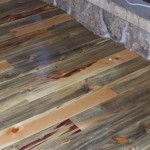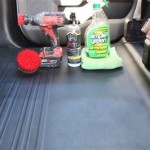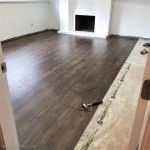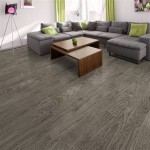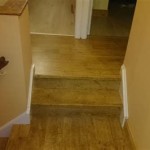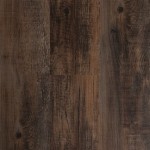Vinyl Wood Plank Floating Flooring: An Essential Guide
Vinyl wood plank floating flooring has emerged as an increasingly popular flooring option due to its durability, versatility, and ease of installation. This guide will provide an in-depth overview of the essential aspects of vinyl wood plank flooring, enabling you to make informed decisions when selecting this flooring material for your home or commercial space.
## Benefits of Vinyl Wood Plank FlooringVinyl wood plank flooring offers numerous benefits that make it a compelling choice:
- Durability: Vinyl flooring is highly resistant to scratches, dents, and moisture, ensuring its longevity and resilience in high-traffic areas.
- Water Resistance: Unlike real wood flooring, vinyl planks are waterproof, making them suitable for kitchens, bathrooms, and basements.
- Easy Installation: Vinyl planks employ a floating installation method, which allows them to be laid over existing subfloors tanpa nailing or gluing.
- Versatile Design Options: Vinyl wood planks are available in a wide range of designs, textures, and finishes, providing ample options to match any decor.
- Comfort: Vinyl flooring is relatively softer than other flooring materials, offering a comfortable feel underfoot.
- Cost-Effective: Vinyl wood plank flooring is typically more affordable than real wood flooring, making it a budget-friendly option.
Vinyl wood plank floating flooring consists of several layers:
- Backing Layer: A rigid underlayment that provides support and sound insulation.
- Core Layer: A high-density core that contributes to the plank's overall strength and stability.
- Printed Design Layer: A realistic wood grain pattern that is digitally printed onto the plank.
- Wear Layer: A transparent top layer that protects the design and the plank from wear and tear.
Floating installation involves locking the planks together without adhering them to the subfloor. This method allows for easy removal and replacement if necessary. It is essential to follow the manufacturer's installation instructions carefully to ensure a secure and durable installation.
## Maintenance and CareProper maintenance and care are crucial to extend the life of your vinyl wood plank flooring:
- Regular Cleaning: Sweep or vacuum regularly to remove dirt and debris. Use a damp mop with a mild detergent for occasional deep cleaning.
- Avoid Abrasive Cleaners: Harsh cleaning agents can damage the protective wear layer. Instead, opt for pH-neutral cleaners specifically designed for vinyl flooring.
- Protect from Direct Sunlight: Prolonged exposure to direct sunlight can cause fading over time. Use curtains or blinds to minimize sun exposure.
- Repair Scratches: Minor scratches can be repaired using a vinyl flooring repair kit. Follow the manufacturer's instructions for proper application.
Vinyl wood plank floating flooring is a versatile and durable flooring option that offers numerous benefits and design possibilities. By understanding the essential aspects covered in this guide, you can make an informed decision when considering this flooring material for your next project. With proper installation and care, vinyl wood plank flooring can provide a stylish and long-lasting solution for your home or commercial space.

Free Floating Vinyl Floors Continental Flooring Company

Floating Vinyl Plank Flooring Vs Glue Down 99cent Floor

Ask The Builder Luxury Vinyl Plank Flooring Is Remarkable Seattle Times

How To Install Floating Vinyl Plank Flooring In 5 Easy Steps Riverbend Interiors

A Beginner S Guide To Installing Vinyl Plank Flooring Dumpsters Com

Laying Vinyl Planks The Right Way Expert Guide By Fantastic Handyman

Glue Down Vs Floating Lvp Which Is Better Whole Cabinet Supply

Vinyl Vs Laminate Flooring Pros Cons And Differences Forbes Home

Advantages Disadvantages Of Floating Floors Floorings

Laminate Vs Vinyl Flooring How To Choose The Family Handyman

